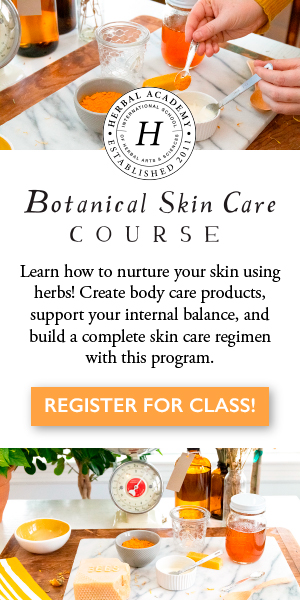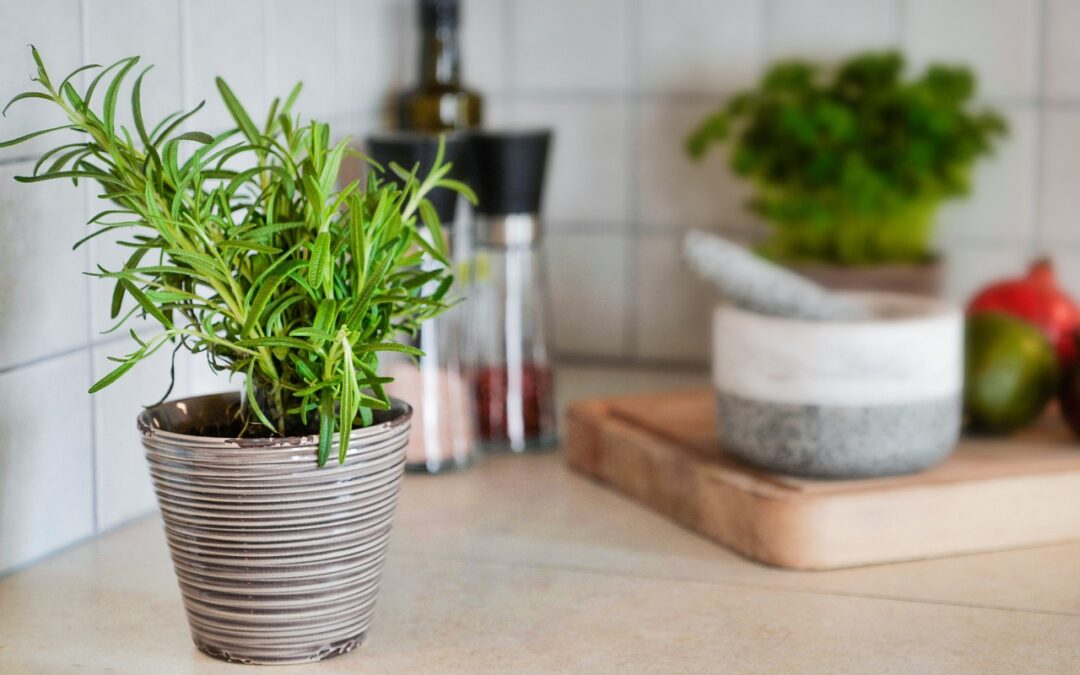
by Leslie Moldenauer | | Essential Oils, Food, Herbs
Step into the enchanting realm of rosemary, where fragrance meets functionality. As a seasoned holistic health practitioner, I am eager to unravel the secrets of this herb that transcends culinary delight, offering a wealth of beauty and health benefits. Join me on this aromatic journey as we explore rosemary’s beauty and health benefits, its profound impact on skin health, and its memory enhancement abilities.
Rosemary in the Kitchen
Adding rosemary to your kitchen dishes enhances flavor and is rich in nutrients, bringing various health benefits. Here are some of the health advantages of incorporating rosemary into your culinary creations:
Antioxidant Powerhouse:
Rosemary is rich in antioxidants, such as rosmarinic acid and carnosic acid, which help neutralize free radicals in the body (Nieto et al., 2018). This antioxidant activity may contribute to overall health and well-being.
Anti-Inflammatory Properties:
The anti-inflammatory compounds in rosemary, including rosmarinic acid and polyphenols, may help reduce inflammation in the body. Chronic inflammation is linked to various health issues, so incorporating anti-inflammatory herbs like rosemary can be beneficial.
Digestive Aid:
Rosemary has traditionally been used to support digestion. It may help alleviate indigestion and bloating by promoting the production of digestive enzymes, making it a valuable addition to meals (Johnson, 2021).
Flavor Enhancement:
Finally, rosemary adds a delightful flavor to dishes. Using herbs like rosemary allows you to reduce the need for excessive salt or unhealthy fats, making your meals not only tastier but also more health-conscious.
Remember, moderation is vital, as culinary herbs are typically used in small quantities. Whether sprinkled on roasted vegetables, infused into oils, or used to season meats, the addition of rosemary can enhance both the taste and health profile of your dishes.
Recipe: Rosemary Infused Lemon Roast Chicken
Ingredients:
One whole chicken (organic is always my choice)
Two lemons
Fresh rosemary sprigs
Olive oil
Salt and pepper to taste
Instructions:
Preheat your oven to 375°F (190°C). Rub the chicken with olive oil, salt, and pepper.
Stuff the cavity with lemon slices and fresh rosemary sprigs.
Place the chicken in a roasting pan and roast until golden brown and fully cooked.
Garnish with more fresh rosemary before serving.
Rosemary as a Herbal Remedy
Skin Soothing Elixir:
Beyond the kitchen, rosemary boasts skin-nurturing properties. Its essential oil, extracted from the leaves, is a beauty elixir known for its antimicrobial and antioxidant benefits. It can revitalize the skin, reduce inflammation, and even promote hair growth (MelanieStOurs, 2020).
DIY Herbal Hair Rinse
Ingredients:
Two tablespoons dried rosemary leaves
Two cups water
One tablespoon of apple cider vinegar
Instructions:
Boil the rosemary leaves in water for 10 minutes.
Let the mixture cool, then strain out the leaves.
Add apple cider vinegar to the rosemary-infused water.
After shampooing, use it as a final rinse to promote shine and scalp health.
We all know that herbs contain vitamins, minerals, antioxidants, phytonutrients, protein, and much more. They are powerhouses for our health, can be used for many things that ail us, and are powerful tools to restore homeostasis. Herbal medicines are just one type of dietary supplement. They are sold as tablets, capsules, powders, teas, extracts, and fresh or dried plants. Essential oils, however, contain no nutrition and, therefore, cannot be considered supplements. Read more about this here.
Rosemary Essential Oil
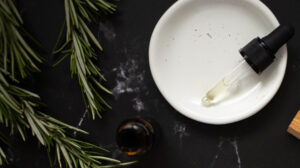
Memory-Boosting Marvel:
Rosemary essential oil, derived from the leaves of the rosemary plant through steam distillation, is a versatile and aromatic oil with a range of potential health benefits. Here are some of the notable benefits associated with rosemary essential oil:
Hair Growth and Scalp Health:
In addition to the plant material, the essential oil stimulates hair growth and improves overall scalp health. It may enhance circulation to the scalp, promote hair follicle strength, and prevent premature hair loss. Mixing a few drops of rosemary oil with a carrier oil and massaging it into the scalp can be an invigorating treatment for hair care. Some add it to their shampoo, which also works as well, but I would add the desired amount of shampoo and essential oil into a small container and mix well before use rather than store the oil in your shampoo bottle long term due to the plastics in the bottle and chemistry of the mixture.
Memory Enhancement and Cognitive Function:
The aroma of rosemary essential oil has been linked to cognitive benefits. Inhaling the scent of rosemary may improve memory retention, alertness, and overall cognitive performance (Hussain et al., 2022). Diffusing rosemary oil in your workspace or using it in aromatherapy may help create a mentally stimulating environment.
Respiratory Aid and Decongestant:
Rosemary oil has natural anti-inflammatory and antimicrobial properties that can benefit respiratory health. Inhaling the vapor of rosemary oil may help alleviate respiratory issues, including congestion, colds, and allergies. You can add a few drops to a bowl of hot water or use it in a steam inhalation.
Pain Relief and Muscle Relaxation:
Rosemary oil applied topically may provide relief from muscle pain and tension. Its analgesic properties can help alleviate discomfort and improve circulation when massaged onto sore muscles or joints.
It’s important to note that while rosemary essential oil offers potential benefits, individual responses can vary. Always perform a patch test before applying essential oils to the skin and consult with a healthcare professional, especially for pregnant individuals, nursing mothers, or those with existing health conditions. Moderation and proper dilution are critical when using essential oils for health purposes.
Memory-Enhancing Diffuser Blend
Ingredients:
Three drops of rosemary essential oil
Two drops of peppermint essential oil
Two drops of lemon essential oil
Instructions:
Mix the essential oils in a small bottle.
Add a few drops to your diffuser and let the aroma envelop your space.
Looking to buy the oil? I recommend Stillpoint Aromatics. Be sure to tell Joy I sent you!
In the enchanting world of herbs, rosemary is a versatile and beneficial ally. Whether gracing your culinary creations, pampering your skin, or boosting your cognitive prowess, rosemary is a fragrant reminder that nature provides sustenance and holistic well-being. So, embrace rosemary’s beauty and health benefits—let it be your aromatic accomplice on the journey to vibrant living!
References
Hussain, S. M., Syeda, A. F., Alshammari, M., Alnasser, S., Alenzi, N. D., Alanazi, S. T., & Nandakumar, K. (2022). Cognition enhancing effect of rosemary (rosmarinus officinalis L.) in lab animal studies: A systematic review and meta-analysis. Brazilian Journal of Medical and Biological Research, 55. https://doi.org/10.1590/1414-431x2021e11593
MelanieStOurs. (2020, February 7). Rosemary’s benefits for skin & hair care + how to use it at home. mindbodygreen RSS. https://www.mindbodygreen.com/articles/rosemary-oil-for-hair-loss-skin-care-and-diy-recipes
Nieto, G., Ros, G., & Castillo, J. (2018). Antioxidant and antimicrobial properties of Rosemary (Rosmarinus officinalis, L.): A Review. Medicines, 5(3), 98. https://doi.org/10.3390/medicines5030098
Veenstra JP, Johnson JJ. Rosemary (Salvia rosmarinus): Health-promoting benefits and food preservative properties. Int J Nutr. 2021;6(4):1-10. Epub 2021 Jun 24. PMID: 34651071; PMCID: PMC8513767.
Please note that I am not a medical practitioner. The content of this website is provided for general informational purposes only and is not intended as, nor should it be considered a substitute for, professional medical advice. Do not use the information on this website for diagnosing or treating any medical or health condition. If you have or suspect a medical problem, promptly contact your professional healthcare provider. By using this website, you assume full responsibility and liability for your actions.
https://lifeholistically.com/astragalus-root-immune-system-support-respiratory-ailments/
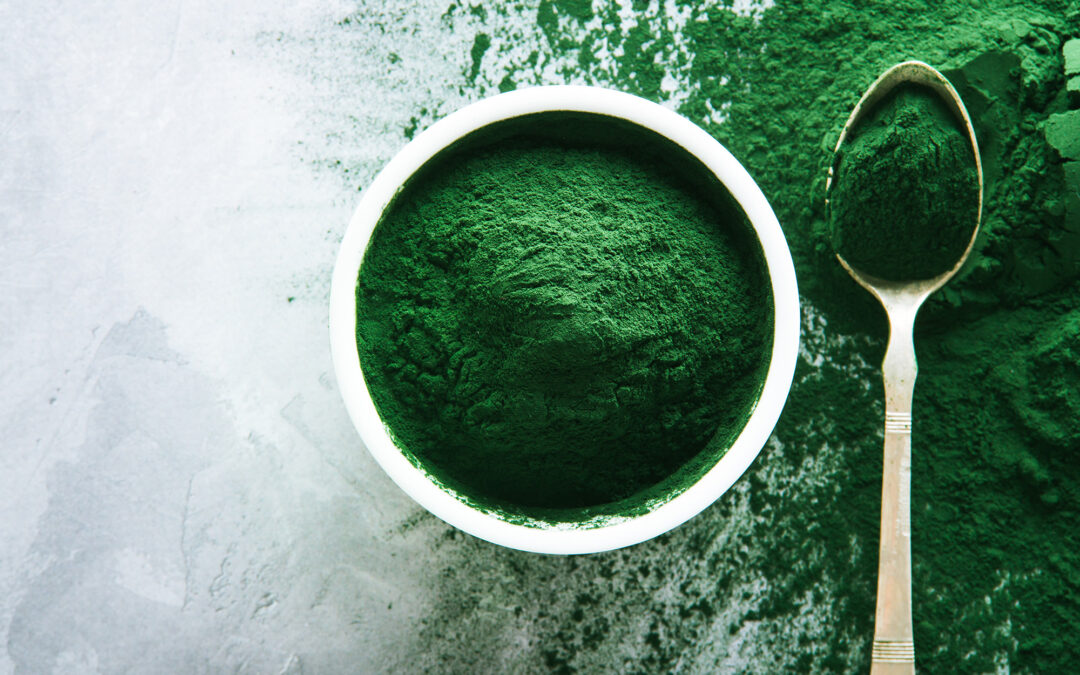
by Leslie Moldenauer | | Essential Oils, Food, Uncategorized
The term “superfood” is not a scientifically defined category, and its use can be somewhat subjective. The ‘foods’ I have decided to include here as superfoods are due to the broad range of nutrients and the fact that they are not consumed daily by many. I advocate for adding goodness to the daily diet that is not in pill form whenever possible. For that reason, I have chosen the top five superfoods that you should try today!
1. Spirulina: This blue-green algae is rich in protein, vitamins, and minerals. It’s known for boosting the immune system, improving gut health, and providing a clean energy boost.
Protein: Spirulina is a fantastic source of plant-based protein, making it an ideal addition for vegetarians and vegans. One tbsp of spirulina offers 4g of protein (Denise Mann, 2023).
Nutrients: Spirulina is known for its immune-boosting properties, thanks to its high concentration of vitamins like B6 and B12, iron, and magnesium.
Detoxifying: Additionally, spirulina is a potent detoxifier, aiding in removing heavy metals from the body (Bhattacharya, 2020).
Not all brands of spirulina are equal, and some can contain heavy metals, which spirulina should be removing from the body, not adding to the burden. I recommend trying the Nutrex Hawaii brand (Not an affiliate).
Here’s a simple and delicious way to incorporate spirulina into your diet:
Spirulina Smoothie Bowl
Ingredients:
1 cup of frozen berries
1/2 cup of spinach leaves
½ ripe avocado
1/2 cup of unsweetened hemp milk (other nut milk is ok too)
One teaspoon of spirulina powder
Toppings: sliced fresh fruit, granola, chia seeds, and a drizzle of honey (optional)
Instructions:
In a blender, combine the frozen berries, spinach leaves, avocado, hemp milk, and spirulina powder.
Blend until smooth and creamy, adjusting the milk quantity to achieve your desired consistency.
Pour the spirulina smoothie into a bowl.
Add your favorite toppings, such as sliced fresh fruit, granola, chia seeds, and a drizzle of honey for extra flavor.
Enjoy your vibrant and nutritious spirulina smoothie bowl, packed with essential nutrients and energy-boosting goodness!
2. Moringa: Moringa is often regarded as a superfood due to its exceptional nutritional content and health benefits. Here’s why it’s considered a nutritional powerhouse:
Rich in Nutrients: Moringa leaves are packed with essential vitamins and minerals. They contain high levels of vitamin C, vitamin A, vitamin E, calcium, potassium, and iron, making them a great source of key nutrients for overall health (Michael Greger M.D. FACLM, 2012).
Antioxidant Properties: Moringa is loaded with antioxidants, such as quercetin, chlorogenic acid, and beta-carotene. Generally speaking, antioxidants help combat oxidative stress and protect the body’s cells from damage.
Anti-Inflammatory: It has anti-inflammatory properties, which can help reduce inflammation in the body, which is the beginning of many chronic issues.
Blood Sugar Regulation: Some studies suggest that Moringa may help regulate blood sugar levels, which can be particularly valuable for individuals with diabetes (Phimarn et al., 2021).
The most common method of consuming Moringa is in powder form in smoothies, soups, or even sprinkled on salads. Start with a small amount and gradually increase your intake to suit your taste.
You can also drink it in tea form. It does not have an overwhelming taste but is subtle and mildly earthy. You can blend in with other herbs, such as lemon balm or peppermint, if you do not like the taste.
Remember to consult with a healthcare professional before adding significant amounts of Moringa to your diet, especially if you have any underlying health conditions or are pregnant, as there can be potential interactions or contraindications.
3. Bee Pollen: Bee pollen is often referred to as a “superfood” because it is packed with a wide range of nutrients and compounds that can provide various health benefits.
Nutrient-rich: Bee pollen is composed of flower pollen collected by bees and mixed with their saliva and nectar. It contains a wide array of essential nutrients, including vitamins such as B vitamins (great for stress) and vitamin C (great for immune health), minerals (like potassium, calcium, and iron), amino acids, and antioxidants. These nutrients can contribute to overall health and well-being.
Protein source: Bee pollen is a good source of high-quality protein, making it a valuable addition to the diet, especially for vegetarians and vegans.
Antioxidants: Bee pollen contains a variety of antioxidants, such as flavonoids, carotenoids, and polyphenols, which can help protect the body from oxidative stress and reduce the risk of chronic diseases. WebMD has some great information here for further reading.
Allergen desensitization: Some people consume bee pollen as a natural remedy for allergies (local honey is a great choice for this purpose). The idea is that regular exposure to small amounts of local pollen can help the body build tolerance and reduce allergy symptoms. This advice does NOT apply to severe allergies.
Bee pollen is not suitable for everyone. Some people may be allergic to bee pollen or experience adverse reactions. Start small to see how your body reacts. Always purchase from reputable sources
.
4. Mushrooms: There are many varieties worth noting in the top five superfoods that you should try today! I will raise my hand here and say that my whole life, I have despised the squeak of a mushroom in my mouth and have avoided them at all costs. As an adult, I still would rather not eat them on my plate, but I consume them in tinctures, enzymatic formulas, and pills. If you are interested in the nutrient and health value of a mushroom and its mycelia, read my blog here for further details on why mushrooms made my top five list of superfoods that you should try today.
5. Acerola Cherry: The most important nutrient that acerola cherry offers us is Vitamin C. Acerola cherries are one of the richest natural sources of vitamin C, which is essential for a healthy immune system, skin health, and overall well-being. Vitamin C is a powerhouse antioxidant, helping to protect cells from damage caused by free radicals.
Immune Support: The high vitamin C content in acerola cherries can help boost your immune system, making the body stronger to fight infections and illnesses (Mezadri et al., 2008). Reach for acerola cherry or other NON-GMO forms of vitamin C to assist when you are feeling under the weather to keep expectoration strong and healthy, potentially avoiding mucous from settling in the lungs.
Anti-Inflammatory Effects: The vitamin C content in acerola cherry makes it inherently anti-inflammatory. Here is more information on the anti-inflammatory benefits of vitamin C. The anti-inflammatory effects benefit nearly every system structure of the body.
While these superfoods may be less well-known, they offer unique health benefits and can be incorporated into a balanced and varied diet to enhance overall wellness. Always consult with a healthcare professional before making significant dietary changes. These top five superfoods are a great addition to the daily wellness routine.
References
Bhattacharya, S. (2020). The role of Spirulina (arthrospira) in the mitigation of heavy-metal toxicity: An appraisal. Journal of Environmental Pathology, Toxicology and Oncology, 39(2), 149–157. https://doi.org/10.1615/jenvironpatholtoxicoloncol.2020034375
Denise Mann, M. (2023, May 17). What you should know about spirulina benefits, nutrition, and more. The Healthy. https://www.thehealthy.com/nutrition/spirulina-benefits/
Mezadri, T., Villaño, D., Fernández-Pachón, M. S., García-Parrilla, M. C., & Troncoso, A. M. (2008). Antioxidant compounds and antioxidant activity in acerola (Malpighia emarginata DC.) fruits and derivatives. Journal of Food Composition and Analysis, 21(4), 282–290. https://doi.org/10.1016/j.jfca.2008.02.002
Michael Greger M.D. FACLM (2012, November 8). What are Moringa’s nutrition facts, benefits & side effects? NutritionFacts.org. https://nutritionfacts.org/questions/the-health-benefits-of-moringa/
Phimarn, W., Sungthong, B., & Wichaiyo, K. (2021). Efficacy and safety on moringa oleifera on blood glucose and lipid profile: A meta-analysis. Pharmacognosy Magazine, 17(74), 373. https://doi.org/10.4103/pm.pm_49_20
Nutritional Approaches to Stress and Anxiety
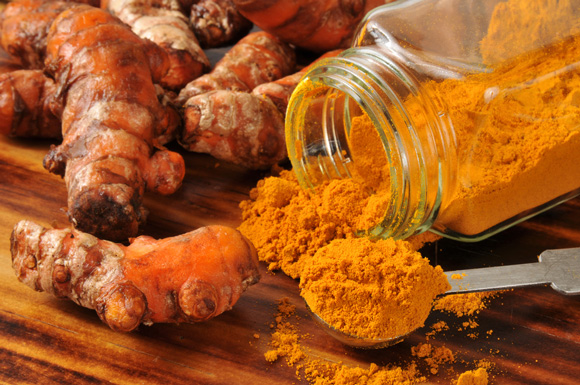
by Leslie Moldenauer | | Food, Mind
Lifeholistically is a huge fan of emotional healing using essential oils, clearly defined in the latest book, Emotional Healing with Essential Oils- Get your copy here. Wellness requires a full range of methods and efforts, including what we put on our plates. Proper health begins in the kitchen. In looking at mental wellness, there are many things we can put on our plate to enhance it. These are the top foods to support mental wellness.
There are four pieces that I like to look for in food; call them the fab four. Those are dopamine (tyrosine precursor), choline, serotonin, and GABA-rich foods. Each supports mental wellness in the gut and the brain.
DOPAMINE RICH FOODS
Dopamine is a neurotransmitter in the brain. It is a chemical that transports information between our brain’s neurons. Dopamine helps to regulate attention learning and supports healthy emotional responses (Tesch, 2023). This neurotransmitter also plays a role in reinforcement to influence addictive behaviors. On the flip side, when we consume dopamine-rich foods, the brain is flooded with positive feelings, encouraging us to eat those foods repeatedly. Tyrosine-rich foods enhance dopamine production; without one, the brain will stave for the other.
Turmeric is a spice (root) used in ancient Indian and Middle Eastern cuisine for centuries. Turmeric shows great promise to help fight depression due to its higher dopamine levels.
A recent study has shown that turmeric is more effective at treating depression than Prozac alone (Sanmukhani et al., 2013). Ideally, cook with turmeric as often as possible. If capsule form is preferred, make sure it contains black pepper, as the two significantly increase absorption.
- Turmeric reduces Inflammation: Chronic inflammation in the brain is linked to various mental health conditions, including depression and anxiety. Curcumin has anti-inflammatory properties that may help reduce brain inflammation, potentially alleviating symptoms of these conditions.
- Boosting Brain-Derived Neurotrophic Factor (BDNF): Curcumin has been shown to increase the levels of BDNF, a growth hormone in the brain (Sarraf P et al., 2019). Low BDNF levels are associated with conditions like depression and Alzheimer’s disease. By increasing BDNF, curcumin may support brain health and help combat these conditions.
- Antioxidant Properties: Oxidative stress, where there is an imbalance between free radicals and antioxidants in the body, has been linked to mental health disorders. Curcumin’s antioxidant properties can help neutralize free radicals, potentially protecting the brain from oxidative damage.
*Turmeric in amounts higher than typically consumed in food is not for everyone. Use caution: Pregnancy, gallbladder issues, diabetes, GERD, hormone-sensitive conditions, iron deficiency, surrounding surgery.
*It is important to note that while there is promising research on curcumin’s potential role in mental health, it is not a standalone treatment for severe mental health conditions. It can be part of a holistic approach that includes a balanced diet, regular exercise, and professional mental health care. Always consult a healthcare provider before using curcumin as a supplement or making significant dietary changes to address mental health concerns.
Below is a must-try recipe for a cinnamon turmeric smoothie.
Ingredients:
Unsweetened coconut milk 12oz (can be replaced with almond or oat milk)
Half of a frozen banana
2 Organic pitted smashed-up dates
Ground cinnamon 2 tsp
Ground turmeric 1 tsp
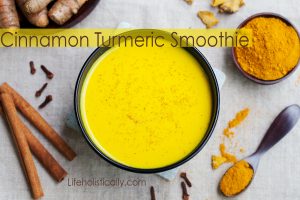
Blend well and enjoy.
Other dopamine-rich foods include lentils, nuts such as almonds and walnuts, and seeds such as pumpkin and sesame. Animal-based foods, including eggs, beef, chicken, turkey, and organic dairy, can also be eaten.
CHOLINE RICH FOODS
Choline is brain food. “One of the primary functions of choline is helping brain cells produce acetylcholine, a key neurotransmitter for mental focus and learning. A choline deficiency can result in poor concentration, memory, mood changes, and other cognitive impairments, especially as someone ages” (Kubala, 2023).
According to the book The World’s Healthiest Foods, shrimp, eggs, and scallops contain the highest amounts of choline (Mateljan, 2007). What about us vegans? Brussel sprouts, broccoli, cauliflower, asparagus, organic chicken, and wild salmon. Here is more about how they work.
- Salmon: Salmon is rich in choline and provides omega-3 fatty acids, known for their positive effects on brain health and mood regulation.
- Chicken: Poultry, especially chicken, is a good source of choline. Choline forms phospholipids, which are essential for brain cell membranes.
- Broccoli: This cruciferous vegetable contains a significant amount of choline. It also provides essential antioxidants and nutrients that support overall brain health.
- Brussels Sprouts: Like broccoli, Brussels sprouts are rich in choline and other nutrients that contribute to healthy brain function and mental wellness. A one-cup serving of this cruciferous vegetable contains 130% of the daily recommendation of vitamin K, a nutrient that may improve cognition as we age. The following study published by the University of Angers in France found a correlation between increased Vitamin K and enhanced mental abilities (Chouet et al., 2015).
Including choline-rich foods can help support cognitive function, memory, and mood regulation, contributing to overall mental wellness.
SEROTONIN RICH FOODS
Serotonin is a chemical that acts as a mood stabilizer. It is also responsible for healthy sleep. Serotonin is a feel-good chemical that is synthesized through tryptophan. These are the foods to consume daily, as the body cannot produce tryptophan.
Chia, sesame, sunflower, flax, pistachios, almonds, and cashews are all great choices. There is so much goodness in these seeds and nuts; be sure to consume them every day.
Cannot eat them due to intestinal pockets? Other foods include salmon (only wild), chicken, turkey, uncooked oats (overnight oats are perfect), and beans.
Try this overnight oats recipe:
Old-fashioned oats 1/3 cup
Organic coconut yogurt (full-fat coconut crème can be an alternative) ½ cup
Small apple cut up or ½ of a med sized (my favorite is Gala or Pink Lady)
Oat milk ½ cup (almond and coconut are alternatives)
Ground cinnamon 1 tsp
Pinch ginger
Pinch sea salt
Crushed walnuts 2 tbsp
Dried cranberries 1 tbsp
Chia seed 1 tbsp
Add all ingredients into a glass mason jar and pour in nut milk. Do not shake. Store in refrigerator overnight. Mix well in the morning. Add more milk if necessary, and enjoy!
GABA RICH FOODS
The last up is GABA. Gamma-aminobutyric acid is an amino acid produced naturally in the brain. GABA plays a crucial role in brain function and mental health. It’s an inhibitory neurotransmitter, meaning it helps regulate brain activity by reducing neuron excitability. Adequate GABA levels are associated with reduced anxiety, improved mood, and enhanced mental wellness. While you can’t get GABA directly from food, certain foods may support GABA production and receptor function. These foods include:
Whole Grains: Brown rice, whole wheat, and oats contain glutamic acid, a precursor to GABA. Consuming whole grains can indirectly support GABA production.
- Beans: Soybeans (organic only) and lentils are good sources of glutamic acid, supporting GABA synthesis.
- Fish: Fish wild salmon contain high taurine levels, which can stimulate GABA production in the brain.
- Nuts and Seeds: Almonds, walnuts, sunflower seeds, and others are sources of glutamic acid and may contribute to GABA production.
- Fermented Foods: Some fermented foods like kefir, yogurt, and kimchi contain beneficial bacteria (probiotics) that may positively influence GABA production in the gut.
- Herbal Tea: Camellia sinensis, also called tea plant, is used to make most traditional caffeinated teas, including black tea, white tea, oolong tea, and green tea. Tea plant naturally contains GABA.
GABA’s Effect on the Brain and Mental Health:
- Anxiety Reduction: GABA’s inhibitory nature helps calm the brain and reduce anxiety. Low GABA levels have been linked to anxiety disorders, and increasing GABA activity can alleviate symptoms (Gauthier & Nuss, 2015).
- Stress Management: GABA helps regulate the body’s stress response by inhibiting the overactivity of the brain’s excitatory neurotransmitters (Hepsomali et al., 2020). This can lead to improved stress management and mental resilience.
- Mood Enhancement: GABA can promote relaxation and emotional balance, potentially aiding in mood regulation and preventing mood disorders like depression.
- Improved Sleep: GABA’s calming effects may support better sleep quality, helping alleviate insomnia and improve overall mental well-being.
It’s important to note that the relationship between dietary GABA precursors and increased GABA levels in the brain is complex, and individual responses can vary. While incorporating GABA-supporting foods into your diet may offer some benefits, addressing mental health concerns should involve a comprehensive approach, including professional guidance, stress management, and other lifestyle factors.
Read more about GABA, here.
When we add the right foods to our plate alongside proper rest, hydration, exercise, and the introduction of complementary therapies such as essential oils, acupuncture, yoga, qi-gong, meditation, and others, we have a much better chance at restoring/maintaining the state of our mental wellness. These are the top foods to support mental wellness.
References
Chouet, J., Ferland, G., Féart, C., Rolland, Y., Presse, N., Boucher, K., Barberger-Gateau, P., Beauchet, O., & Annweiler, C. (2015). Dietary vitamin K intake is associated with cognition and behaviour among geriatric patients: The clip study. Nutrients, 7(8), 6739–6750. https://doi.org/10.3390/nu7085306
Gauthier, I., & Nuss, P. (2015). Anxiety disorders and GABA neurotransmission: A disturbance of modulation. Neuropsychiatric Disease and Treatment, 165. https://doi.org/10.2147/ndt.s58841
Kubala, J. (2023, February 21). 16 foods that are high in choline. Healthline. https://www.healthline.com/nutrition/foods-with-choline
Kulkarni, S. K., Bhutani, M. K., & Bishnoi, M. (2008). Antidepressant activity of curcumin: Involvement of serotonin and dopamine system. Psychopharmacology, 201(3), 435–442. https://doi.org/10.1007/s00213-008-1300-y
Mateljan, G. (2007). World’s healthiest foods: Essential guide for the healthiest way of eating. GMF Publishing.
Professional, C. C. medical. (n.d.). Gamma-aminobutyric acid (GABA): What it is, Function & Benefits. Cleveland Clinic. https://my.clevelandclinic.org/health/articles/22857-gamma-aminobutyric-acid-gaba
Sanmukhani, J., Satodia, V., Trivedi, J., Patel, T., Tiwari, D., Panchal, B., Goel, A., & Tripathi, C. B. (2013). Efficacy and safety of curcumin in major depressive disorder: A randomized controlled trial. Phytotherapy Research, 28(4), 579–585. https://doi.org/10.1002/ptr.5025
Sarraf P;Parohan M;Javanbakht MH;Ranji-Burachaloo S;Djalali M; (n.d.). Short-term curcumin supplementation enhances serum brain-derived neurotrophic factor in adult men and women: A systematic review and dose-response meta-analysis of randomized controlled trials. Nutrition research (New York, N.Y.). https://pubmed.ncbi.nlm.nih.gov/31279955/
Tesch, D. (2023, September 25). Foods that can boost your mental health. HealthPartners Blog. https://www.healthpartners.com/blog/can-food-affect-your-mood
Like so many practices in life, I encourage you to become educated on the proper use of essential oils. When using them, please do so cautiously, understanding that there is often misinformation on the internet. You can be assured that I support only educated and proven resources. While essential oils should not be feared they should be respected and used properly to ensure the safety of the individuals using them.
Please note that I am not a medical practitioner. The content of this website is provided for general informational purposes only and is not intended as, nor should it be considered a substitute for, professional medical advice. Do not use the information on this website for diagnosing or treating any medical or health condition. If you have or suspect you have a medical problem, promptly contact your professional healthcare provider. By using this website, you assume full responsibility and liability for your own actions.
Nutritional Approaches to Stress and Anxiety
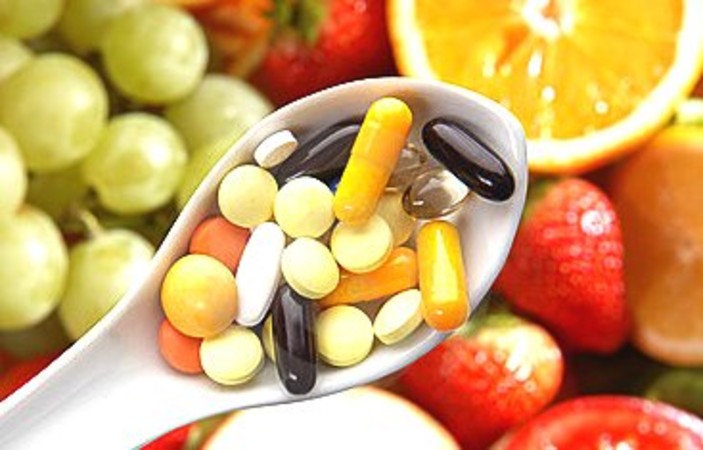
by Leslie Moldenauer | | Food, Vitamins
With so many vitamin brands and choices, choosing vitamins is never an easy process. There are many aspects to consider, I will cover a few of them here: Choosing the best vitamins for your kids.
Is your Vitamin C “Real” or Genetically Modified?
Vitamin C is a powerful ally in our tool chest, as it is a strong antioxidant, and well as good for tissue repair and healing of wounds (Vitamin C does much more, but my focus here is with children). Vitamin C taken in large doses (split up throughout the day) at the first sign of a cold is incredibly helpful for a quicker recovery.
The problem that many are not aware of is that most vitamin C tablets/powders are synthesized in a lab, in a form called ascorbic acid.
Ascorbic acid is synthesized from corn syrup. Over 88% of the corn crops in the US are currently genetically modified. (Source) Therefore, any vitamin C derived from corn syrup is a GM product. The only exception would be if the bottle states that the product is organic and GMO-free. Look for this seal on your bottle:
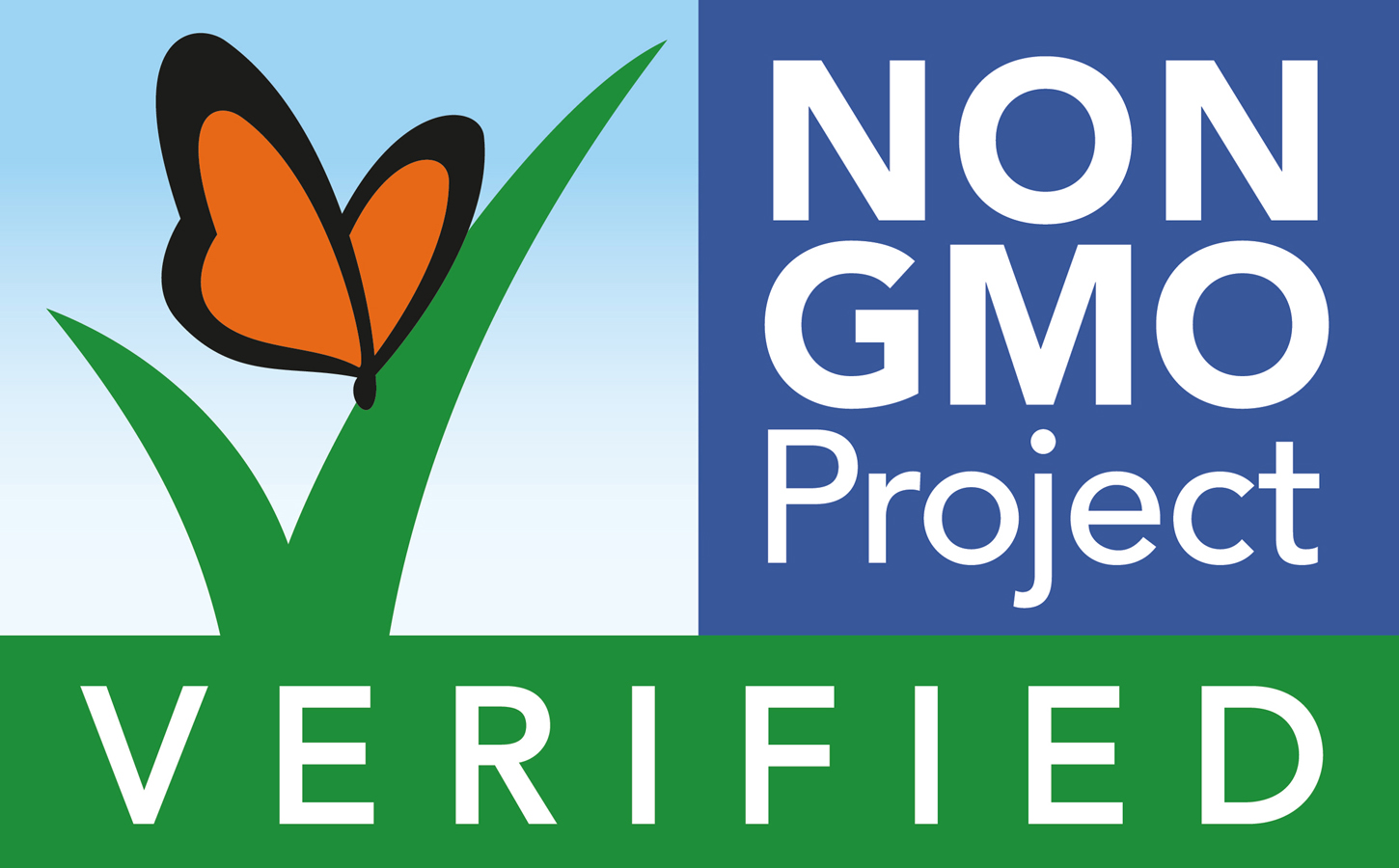
Although it is rare to be “seriously” deficient in vitamin C, evidence still suggests many suffer from a deficiency. (Source)
Here is a link to the vitamin C that my household uses daily. (Source) Available in pill or powder form
Some companies provide vitamin C as ascorbic acid but proudly state not from GM sources. Whole food is best, but is not the only available option.
What is the Difference Between Folate and Folic Acid? Why should you care?
There are many healthcare providers who believe that the two are interchangeable, but they are not. Folate is a group of water-soluble B vitamins, also known as B9. Folic acid is the oxidized synthetic compound used in dietary supplements, folate is the natural form.
Folic acid is not the only synthetic you need to look out for in your children’s vitamins. What is the issue with synthetic vitamins? Synthetic vitamins are made in a lab, with chemicals that do not come from the natural source, (made from whole food). Synthetic vitamins are supposed to mimic the way natural vitamins act in our bodies. Oftentimes, these synthetic isolates cannot be used or even recognized by the body, and here lies a major problem with synthetics (Source). Scientists are not quite sure what exactly happens when consuming synthetics, but one theory is they oxidize quickly in the body.
“The process of oxidation in the human body damages cell membranes and other structures including cellular proteins, lipids, and DNA. When oxygen is metabolized, it creates ‘free radicals’ which steal electrons from other molecules, causing damage” (Source).
Here is a complete list of synthetics to be aware of and avoid:
Vitamin A: Acetate and Palmitate
Vitamin B1 (Thiamine): Thiamine Mononitrate, Thiamine Hydrochloride
Vitamin B2 (Riboflavin): Riboflavin
Pantothenic Acid: Calcium D-Pantothenate
Vitamin B6 (Pyridoxine): Pyridoxine Hydrochloride
Vitamin B12: Cobalamin
PABA (Para-aminobenzoic Acid): Aminobenzoic Acid
Folic Acid: Pteroylglutamic Acid
Choline: Choline Chloride, Choline Bitartrate
Biotin: d-Biotin
Vitamin C (Ascorbic Acid): Ascorbic Acid
Vitamin D: Irradiated Ergosteral, Calciferol
Vitamin E: dl-alpha tocopherol, dl-alpha tocopherol acetate or succinate
NOTE: The “dl” form of any vitamin is synthetic.
(The above list is taken from Source)
One more important thing to mention is that there have been reports of negative effects on children who take supplements containing folic acid during pregnancy. One study showed a possible link to an increase in childhood asthma (Source). Here is a vitamin that I recommend for little kids that can not swallow a pill quite yet, has Non-GMO vitamin C (Source), derived from whole foods and does not contain folic acid.
Vitamins should not be a replacement for proper nutrition, but I fully believe that even when eating a good diet, vitamins may still be necessary. When you take vitamins derived from whole food, they are properly absorbed and assimilated without risk.
Avoid Large Amounts of Vitamin A
Are you aware of the risk that comes with taking large amounts of vitamin A, or any antioxidant for that matter? Although vitamin A is crucial for a child’s health and development, its consumption is not cut and dry. Let me explain.
Currently, the recommended dose of vitamin A for children is as follows:
1-3 years—1,000IU or 300mcg
4-8 years—1,333IU or 400mcg
9-13 years—2,000IU or 600mcg
These are the recommended daily allowance, not the maximum daily allowance. (Source)
If you look up the contents of vitamin A in a food you would see that vitamin A can be obtained easily. Now grab your child’s multivitamin. I would guess it contains 2,500IU of vitamin A, but I have seen some as high as 5,000IU.
Why is this a problem? Unlike vitamin C which is a water-soluble vitamin, vitamin A is a fat-soluble vitamin. When you take excessive amounts of water-soluble vitamin C, your body releases what it does not need in your urine. An excessive amount of vitamin A, however, gets stored in the body, particularly in the body tissues. According to WebMD, “High dose of vitamin A, or any other antioxidant, may do more harm than good and is associated with increased risk or mortality from all causes” (Source). As mentioned above, excessive consumption of any antioxidant actually becomes a pro-oxidant, and this is not favored.
Pay very close attention to the vitamins you are giving your children. Multiple products can contain vitamin A, for example, your multivitamin and cod liver oil if that is something you give to your children. Make efforts to add up the multiple sources.
I believe kids need a multivitamin, but they need one that is not providing everything in excessive amounts. You are feeding your kids the best you can and the vitamin is meant to close the gap. Many believe you can take too much of a good thing.
Another thing to consider….. You may have found vitamins that state that they are derived from whole food and that the recommended dose is not simply one pill, but 3-4 a day. Why is this? If you obtained the daily allowance of the vitamins and nutrients in one pill, the pill would be so large you may not even be able to swallow it! This is another reason for some synthetics. As you can see, there is not a perfect solution with one perfect answer.
Don’t Forget About Herbs
I have a minor in herbalism and am a huge proponent of using herbs at home. It is critical to know what you are getting with herbs as well as vitamins. Many crops are not grown sustainably, are heavily sprayed with pesticides and fertilizers, not fresh or true to the amounts that are shown on the bottle. As there is a multitude of things to keep in mind where herbs are concerned. I make all my own teas, decoctions, infusions, tinctures, etc. It is critical to perform your own research.
Here are a few companies that I utilize, but I do try to grow as much of my own herbs as possible:
Mountain Rose Herbs
Starwest Botanicals
Here are some resources to learn how to DIY:
Rosemary Gladstar
#1
#2
#3
It’s All Medicine
Whether we are talking about vitamins, minerals, herbs, or essential oils, they are all medicine. Little kids should not confuse vitamins with candy. Make sure they understand this from a very young age. I tend to avoid gummy vitamins for this reason (as well as the added sugar) unless I have made them. I have seen blogs showing babies and toddlers holding bottles of essential oils or applying oils themselves (no I am not making that one up). This is not recommended. Please respect it all as medicine, as that is what it truly is.
Remember that even though something is touted as natural, that everything is dose-dependent. The poison is truly in the dose.
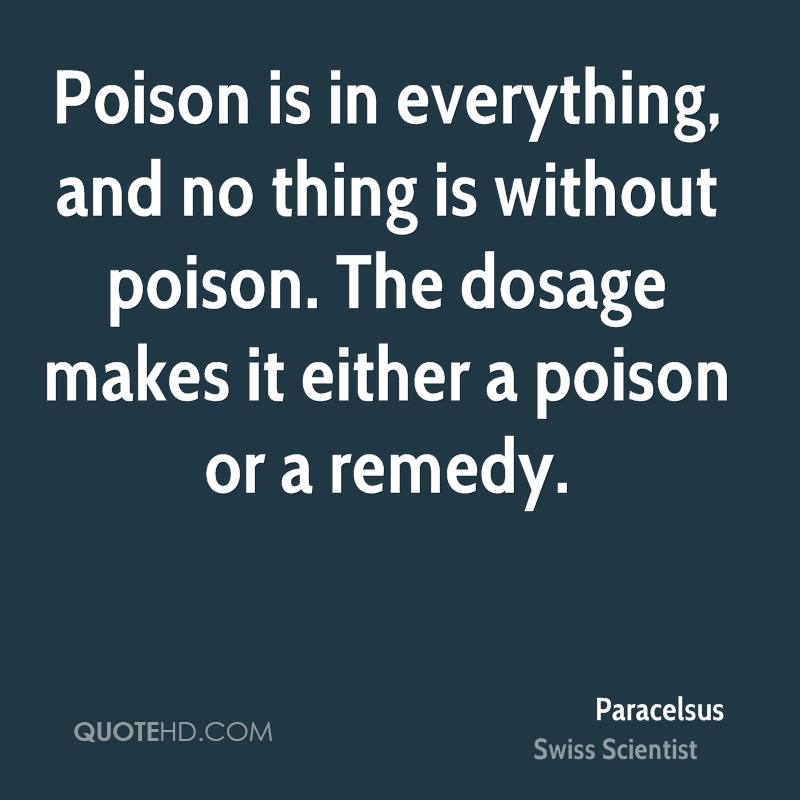
Pediatrician Recommended
I simply could not write this article about vitamins and not talk about this. I find it incredible that the most widely recommended children’s multivitamin, “from prehistoric times” with a popular cartoon from when I grew up is filled with…well…crap! When looking at the label of the #1 PEDIATRICIAN RECOMMENDED CHOICE vitamin, you will find:
Aspartame
Numerous artificial colors (FD & C Blue #2, Red #40, Yellow #6)
Zinc Oxide
Sorbitol
Soybean Oil (GMO)
Corn Starch (GMO)
FULL of synthetics
Quite frankly, a vitamin could not get much worse than this.
Purity and Testing
It is important to do your own research on anything that you purchase. I have provided a few links throughout the article, but this is by no means an exhaustive list. Purity and testing are important, but there are not too many standards out there currently.
One that is relatively new is called USP (US Pharmacopeial Convention). According to their website (Source)
When you see the USP mark, it means the supplement:
Contains the ingredients listed on the label, in the declared strength and amounts
Does not contain harmful levels of specified contaminants
Is made according to FDA and USP Good Manufacturing Practices, using sanitary and well-controlled processes.
This surely is a good start.
Fish oils in any form also need to be researched well for purity and testing. Certain products can contain heavy metals, so it is important to know that your product has been quality tested and that the company stands by what is in their bottle.
In conclusion
We all try to do what is best for our children in every way and making sure that they are getting proper nutrition/nutrients is critical for health and development. I hope that I have helped shed some light on some important issues and have made the selection process a bit easier. Health and light!
*Sources listed within the article

Please note that I am not a medical practitioner. The content of this website is provided for general informational purposes only and is not intended as, nor should it be considered a substitute for, professional medical advice. Do not use the information on this website for diagnosing or treating any medical or health condition. If you have or suspect you have a medical problem, promptly contact your professional healthcare provider. By using this website, you assume full responsibility and liability for your own actions.
BEFORE YOU GO! Remember to sign up for my FREE Facebook group! Hang out with me and THOUSANDS of other Essential Oil lovers looking to learn, click on to join Real Essential Oil Education Group!
Check out my FREE offer below!
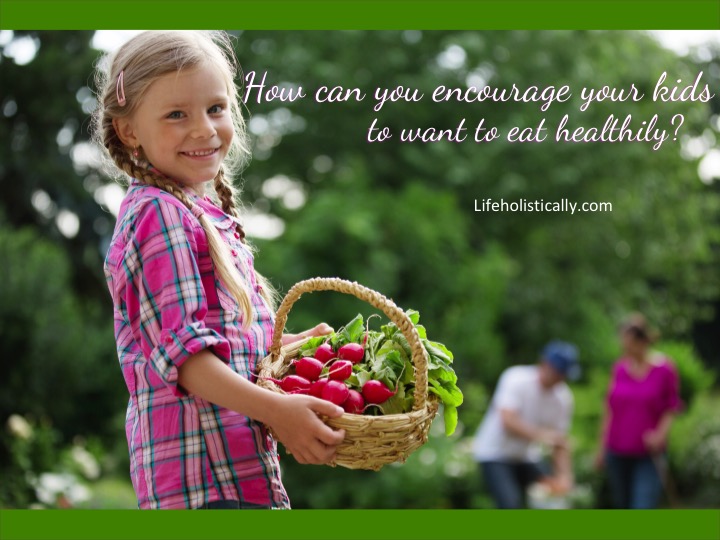
by Leslie Moldenauer | | Body, Essential Oils, Food
Have you ever felt defeated and found yourself thinking, “How can I do better for my kids?” or “How do I teach them healthier habits?” you are not alone. Encourage your kids to eat healthily!
I hope to give you some ideas/ways that this can be accomplished. Take away what works for you and leave what doesn’t. Most importantly, just know on any given day that you are doing your best, and that is all you can do.
I have a couple of solid rules regarding what type of food I bring into the home; they are my “food rules.” Perhaps you have food rules too and have not even thought twice about it.
Here are a few of mine that I will cover in more detail:
-Avoid GMO’s
-Organic fruits and vegetables (Avoid dirty dozen)
-Limit sugar
-Meat and dairy always come from organic 100% grass-fed animals
-Limit processed food
-Plenty of clean water
-Limit grains
-No BPA/plastic
-Avoid GMO’s
I am a firm believer in knowing not only what is in my food, but also where it comes from. I do not support the genetically modified (GMO) food movement that is in full swing in the US. This can be overwhelming for some if you do not know what to look for on a food label. I know it was for me at first, so I hope I can help you to be able to identify them too!
What exactly are GMOs? GMOs (or “genetically modified organisms”) are living organisms whose genetic material has been artificially manipulated in a laboratory through genetic engineering, or GE. Most developed nations do not consider GMOs to be safe. More than 60 countries have significantly limited or completely banned the production and sales of GM food. Many states here in the US have fought for the minimum of GMO labeling, so consumers can at least choose what they want to spend their grocery dollars on, but this has proven to be a big uphill battle.
You may be surprised to know that over 80% of processed foods have been modified!
Here are the main crops:
-Alfalfa (first planting 2011)
-Canola (approx. 90% of US crop)
-Corn (approx. 88% of US crop in 2011)
-Cotton (approx. 90% of US crop in 2011)
-Papaya (most of the Hawaiian crop; approximately 988 acres)
-Soy (approx. 94% of US crop in 2011)
-Sugar Beets (approx. 95% of US crop in 2010)
-Zucchini and Yellow Summer Squash (approx. 25,000 acres)
Source: NON-GMO Project
So to put this in perspective, you might want to take a walk through the grocery store and perform a little experiment. Look at labels on processed foods. See how many of them have sugar, corn, and soy in some form. It is going to be in just about everything you pick up. My first trip to the store to investigate was a huge eye-opener.
So what can you do to avoid it? Buy 100% organic, or a company proudly states on the box that they are part of the NON-GMO project, carrying this seal.
Here are some companies that proudly support the Non-GMO project.
Studies covering the safety of these foods long term is unknown, as they have never been done. We do not know what would happen in 10 or 20 years, which is a concern. If science manipulated it, I don’t eat it.
Organic Fruit and Vegetables
If you are new to buying organic, a great place to start is to make sure you buy organic when the item is on the dirty dozen list.
The EWG (Environmental Working Group) puts out a shopping list every year for consumers containing the dirty dozen (produce with the highest pesticide residue). We should purchase these items organic. There is also a clean fifteen (the cleanest of the bunch) that can safely be bought by conventionally grown methods. I always pay attention to the difference in price between organic and conventionally grown on the clean fifteen, because if the difference in cost is not significant, I prefer to support my organic and local farmer.
These are the lists for 2020:
Dirty Dozen
Strawberries
Spinach
Kale
Nectarines
Apples
Grapes
Peaches
Cherries
Pears
Tomatoes
Celery
Potato
Hot Pepper
Clean Fifteen
Sweet corn
Avocados
Pineapples
Onions
Frozen Sweet Peas
Papayas
Eggplant
Asparagus
Cauliflower
Cantaloupe
Brocolli
Mushroom
Cabbage
Honeydew Melon
Kiwi
Source: Environmental Working Group
No need to buy organic from the clean fifteen unless it is on sale, of course.
Here is a link to learn where your favorite fruit or vegetable lands on the list.
Limit Sugar
Sugar is very harmful to the body, and it is not just the empty calories utterly void of nutrition. Sugar provides no nutritional benefit at all, but what it does do is contribute to insulin resistance. The rise in obesity and diabetes is alarming. In 2015, 30.3 million Americans, or 9.4% of the population, had diabetes (Source).
In my home, I found that the times my kids get sick are times when we have faltered and consumed a little more sugar than usual. Now that my boys are 12 and 14, they notice it too. What a blessing that is! Sometimes they have to learn for themselves. I ask my then 10-year-old to create a Google presentation for me about sugar. Where can we find it, what does it do to the body, and whatever else he could come up with. I found kid-friendly sites, fun YouTube videos, and more. He is much more interested to learn about it when mom is not lecturing him. Maybe this trick will work for you too?
Do my kids have an occasional soda at a restaurant? Yes! Do we sometimes go out for frozen yogurt on a beautiful warm summer day? You bet! I do not deprive my kids of what they see as normalcy based on their surroundings outside the home. It is a delicate balance. If I teach my kids precisely what healthy means and they know that when they occasionally waver from that to have a treat that it is ok, I am doing a good job.
How far do I take this? You might be surprised. I have never brought my kids to McDonald’s, Burger King, or Taco Bell, or eaten a popular sugary cereal that cleverly targets kids through their brilliant marketing. They have never asked either. They have never tasted hot lunch at school. I have asked if they want to on a day where the option may be the best for the week, but they declined. So far, I must be doing something right.
Never eat anything that has a commercial on television
Avoiding sugar is not just avoiding candy, chocolate, and donuts. You may be surprised to know where excess sugar is hiding. Sugar is added to all processed foods, why? To make you want to eat more of it. By “you” I do not mean you consciously make that decision; I say that because sugar is so freakishly addicting. Here are some resources for you to learn more about the sugar epidemic and how to help you cut its hold on you:
Top 10 Big Ideas: How to Detox from Sugar
Refined Sugar: The Sweetest Poison of All
That Sugar Film
Source for Meat and Dairy
Grass-fed meat and dairy are far superior to grain-fed. Grass-fed beef is considered a health food due to high amounts of Omega 3’s and is rich in healthy fats (MUFA, PUFA, and SFA). You can be sure if you are purchasing 100% grass-fed organic meat and dairy, that you are not consuming any growth hormones, pesticides, or antibiotics either. Purchase the leanest variety you can find.
Here is a great article that covers this topic in greater detail.
Get plenty of healthy fats in your diet…fat does not make you fat!
Drink Plenty of Clean Water
Short and sweet. I do not bring soda into the home, but as I mentioned above, they get only get a soda when we eat out. Juice is likewise severely restricted. I like to make fruit infused water, and when my boys are not well, I make hydration drinks. They enjoy chocolate almond or oat milk, so we indulge in that. I also purchase flavored water when in a pinch.
No BPA
Bisphenol-A (BPA) mimics estrogen in the body. What does this mean? BPA had shown to disrupt the endocrine system by mimicking the body’s hormones (Source). The glands of your endocrine system are the hypothalamus, pineal gland, pituitary gland, thyroid, parathyroid, thymus, adrenal, and pancreas. BPA releases its influence on all of the glands, which have a direct influence on every cell, organ, and function of your body.
Look for canned food labeled BPA free. It has become relatively easy to find. BPA is in many plastics, but you will also find many bottles that are labeled BPA free as well. Some say that you can safely use plastic as long as 1-it is never heated and 2-never scratched while cleaning. I just prefer to avoid it altogether now that my children are a little older and can responsibly handle a silicone sleeved glass.
Limit Grains
We limit grains in our home. I am the only one that leans toward a Paleo lifestyle for health reasons. As far as my boys, I aim for whole grains and organic. I lean towards brown rice, quinoa, and sprouted bread. Remember that white bread, potato, and rice are very high in starch (GI index) and essentially turn to sugar in the body very fast (Source). The body needs whole grains to help balance the blood sugar all day long. Some scientists and physicians say two slices of whole wheat bread will likely raise your blood sugar levels as high as if you were eating a popular candy bar (Source). Keep this in mind if you or someone you love is struggling with balancing sugars.
How do I get my family on board with this? Get everyone involved!
I make considerable efforts to involve my children in making choices. One day I asked my boys, then approximately 5 and 7, to make a list of foods that they liked and ones they did not like. That was the beginning of the “team” aspect of eating in our house. Of course, kids’ pallets are forever changing and evolving, so we make lists often so that I can try to accommodate their likes the best I can. My boys know that even “cheat” type foods can be eaten in moderation as long as their diet is overall healthy, so those types of items never make their list. Even after they make their lists, my boys understand that eating is somewhat of a compromise. I always try to incorporate their current favorite vegetables, for example, but they know that there are going to be some meals that are not going to be their favorite. One day I make their absolute favorite meal of tacos, and the next, we have salmon and salad. Most days, this works quite well.
Sometimes there are complaints, but I gently remind them that one of their favorite meals will be on its way. I try to tell them of the importance of healthy food for the body, like gas for a car…and try to stay lighthearted. If there is one thing I am constantly reminded of, lecturing is not the answer, but sometimes I find myself doing that before I even realize it. The older they get, the more effective it is for them to learn these things on their own..sometimes with a gentle nudge in the right direction.
Once I know what they have chosen as like foods, I can prepare. I take the time to make meal plans on Sundays for the upcoming week. I always include 1 or 2 favorites that I know the kids will swoon over. With that list in hand, I go shopping. I can eliminate buying things we do not need this way and make for less waste at the end of the week (save your lists for easier future list-making).
You can include your kids in the kitchen too. Age will determine what they can do safely, but mine can gather ingredients, cut up vegetables, set the table while I cook, and taste things along the way.
I try to keep some freezer fruits and vegetables on hand at all times. Frozen fruit comes in handy for fruit infused water, smoothies, a quick bowl of peas, or frozen kale for vegetable soup. Frozen is just as nutritious as the fresh counterpart, and it is quick and easy when you are in a hurry.
I let my boys voice what they would like to have in their school lunch and snack. It helps to ensure they will eat what I give them. As they have gotten older, though, peer influence begins to affect what they want in lunch. They naturally wish to what their friends have, so I try to compromise here too.
We garden as a family. Everyone helps pull weeds, plant seeds and plants, water, and harvest. The boys love to see their hard work on the plate as much as I do. Little goes to waste this way.
In conclusion
Always try to lead by example. Your kids are always watching what you do, not necessarily what you say. Things will not always go smoothly. Be proud of yourself for doing your best and smile for what worked, do not beat yourself up for what didn’t. Eat together and play together. Get plenty of exercise and rest. You are well on your way to “your” best version of “your” health and happiness, and that is what matters.
Please note that I am not a medical practitioner. The content of this website is provided for general informational purposes only and is not intended as, nor should it be considered a substitute for, professional medical advice. Do not use the information on this website for diagnosing or treating any medical or health condition. If you have or suspect you have a medical problem, promptly contact your professional healthcare provider. By using this website, you assume full responsibility and liability for your own actions.
*Sources listed within the article in blue.
Like so many practices in life, I encourage you to become educated on the proper use of essential oils. When using them, please do so cautiously, understanding that there is often misinformation on the internet. You can be assured that I support only educated and proven resources. While essential oils should not be feared they should be respected and used properly to ensure the safety of the individuals using them.
Please note that I am not a medical practitioner. The content of this website is provided for general informational purposes only and is not intended as, nor should it be considered a substitute for, professional medical advice. Do not use the information on this website for diagnosing or treating any medical or health condition. If you have or suspect you have a medical problem, promptly contact your professional healthcare provider. By using this website, you assume full responsibility and liability for your own actions.
Raw Energy Bites
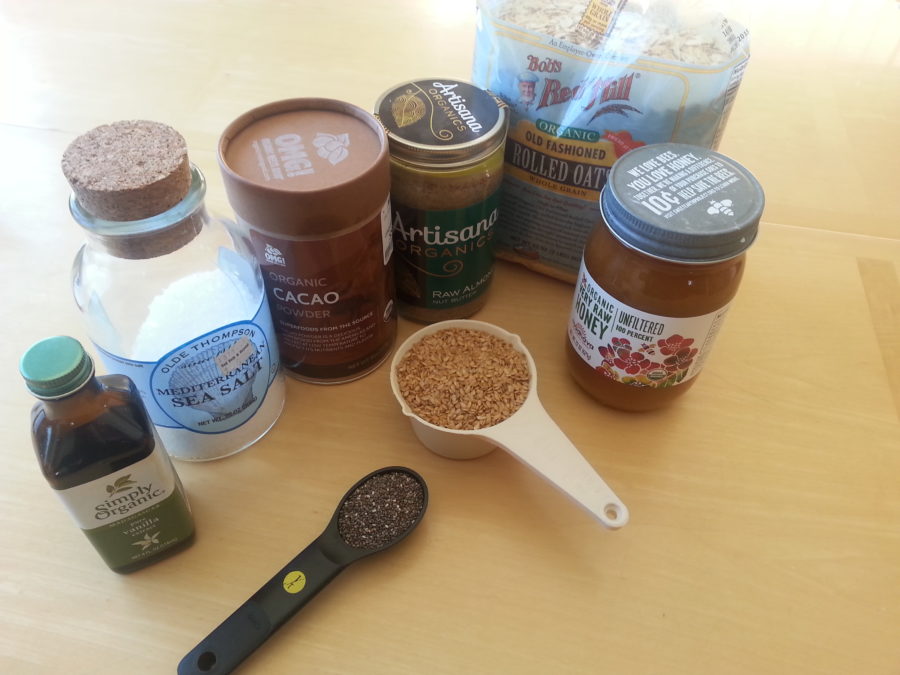
by Leslie Moldenauer | | Food, Recipes
I enjoy making new things that are not only healthy but will make 10 and 12 year old boys happy, and feel like they are getting a “treat”. I make these raw energy bites to be able to provide them with a healthy snack at school, but it is a nice protein snack in between meals, something that will give them brain power and plenty of nutrition.
Ingredients
1 1/2 cup gluten free oats
1/c cup freshly ground golden flaxseed (fresh is best)
1 tbsp chia seeds
2 tbsp organic cacao powder
1 tsp vanilla extract
2 tsp Himalayan pink sea salt
3/4 cup organic raw almond butter (crunchy or creamy)
1/3 cup raw honey
1/2 cup coconut flakes (optional)
2 tsp collagen powder
Blending the ingredients will be a workout in itself. A wooden spoon is recommended. Optional ingredients can be chocolate chips, or ground up raw almonds/walnuts.

Once thoroughly blended, form into small balls. Aim for about 1″ in diameter. This recipe should about two dozen balls. They keep well in the fridge and can also be made in larger batches and frozen.
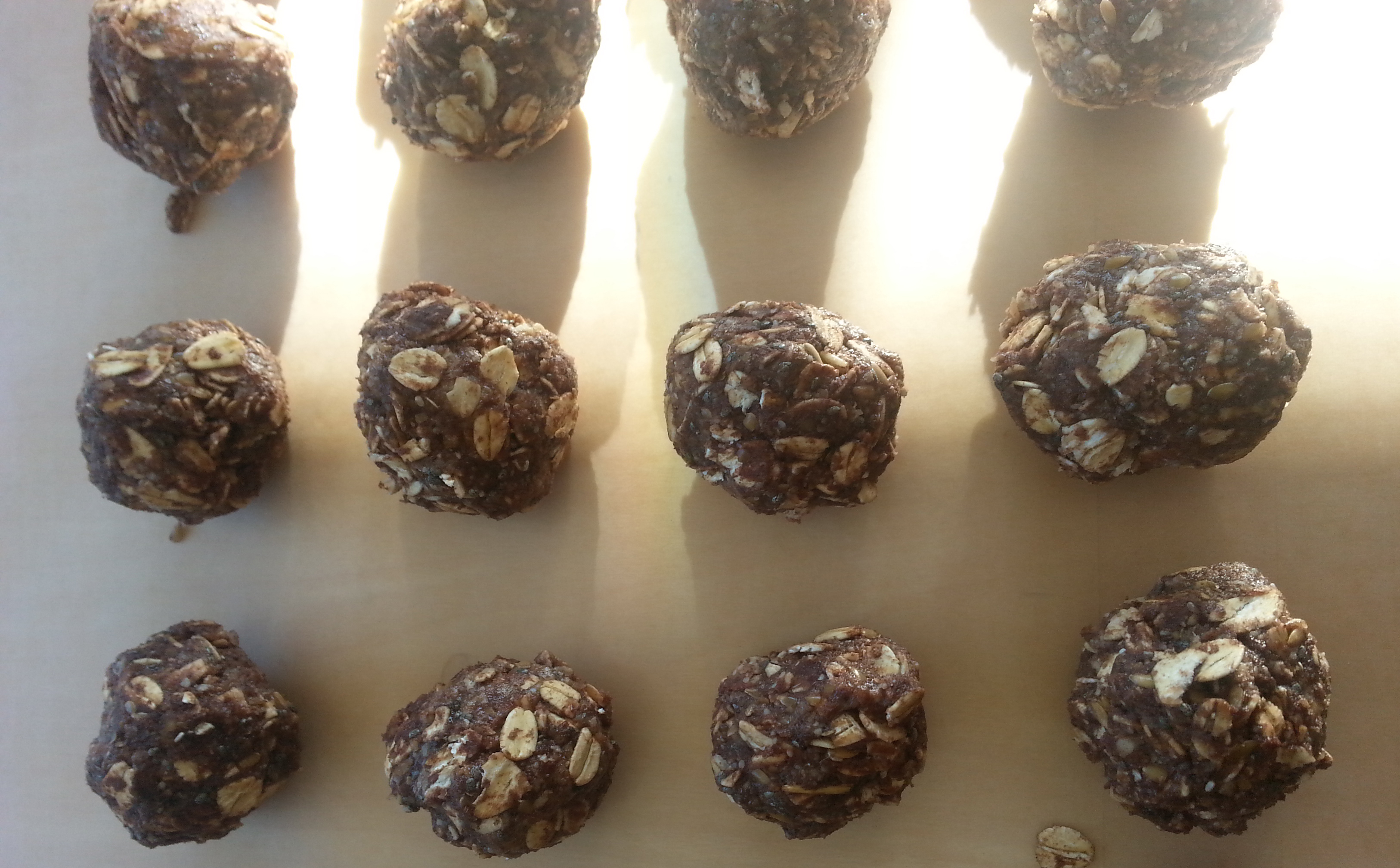
Please note that I am not a medical practitioner. The content of this website is provided for general informational purposes only and is not intended as, nor should it be considered a substitute for, professional medical advice. Do not use the information on this website for diagnosing or treating any medical or health condition. If you have or suspect you have a medical problem, promptly contact your professional healthcare provider. By using this website, you assume full responsibility and liability for your own actions.
















